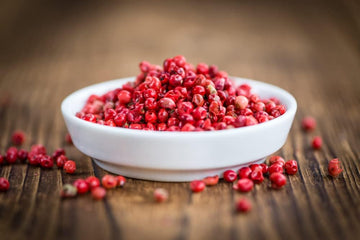
How To Store Your Sunchokes For Winter
With the winter season approaching, ensuring a bountiful supply of fresh produce becomes crucial. Sunchokes, known for their abundance and hearty growth, can be an excellent option to stock up on for the colder months. Whether you have a large harvest or just a few plants, proper storage is essential to ensure your sunchokes remain fresh and usable. Here are some effective methods to store your sunchokes for the winter season.
Harvesting and Sprouting
Sunchokes can be left in the ground until needed, as they easily retain their freshness underground for long periods of time. If they happen to sprout, don't worry; they are still perfectly edible. However, once you dig them up them, preserving them becomes more challenging.
Natural Regeneration
Any tubers left unharvested will sprout and grow new sunchoke plants come spring. To manage this natural regeneration, you can let the plants grow and then dig them out to harvest the tubers. By following this approach, you can enjoy a continuous harvest throughout the year, ensuring a consistent supply of fresh produce. This is the method that I would recommend for most people and is the method that I use myself. I dig up the tubers as I need them and leave the rest underground to be used another day. The longer they stay underground the larger they will get (and the longer tubers are in the ground the less potential they have to cause gas!)
Winter Protection
The only reason that you may not want to use the natural regeneration method would be if you are clearing the planting area completely to plant a new crop OR if your area experiences severe freezing temperatures that would prevent you from harvesting the sunchokes during the winter due to a completely frozen ground, if that is the case in your area, consider using a bin or bucket to mimic the conditions that the tubers currently have in the ground.
Soil Considerations
The choice of soil for layering is critical. Opt for a mix of clay, loam, and sand, as it retains sufficient moisture without making it too challenging to harvest the sunchokes. In most cases, the soil they were originally grown in will work well for this purpose. If only sandy soil is available, it's still a better option compared to a pure sand or peat moss, both of which are too porous and can lead to quick decay.
Experimental Approach
For a recent winter experiment, I compared three types of soil each layered with Sunchokes in individual bins.
- Bin 1: Playground-Style Sand: This is the sifted white sand that is often used to fill Sandboxes. This can be purchased at Home Depot or most other Hardware Stores
- Bin 2: All-Purpose Sand: This type of sand can also be purchased at Home Depot or most hardware stores. It is generally a few dollars cheaper than the playground sand and has a darker brown and more natural look
- Bin 3: Backyard Sand: This bin was layered with the soil from my backyard; the same type of soil that the Sunchokes were actually growing in prior to harvest.
While all three methods were somewhat effective, both Bin 1 and Bin 2 required some monitoring. Since pure sand tends to lack moisture retention, I found that leaving Bin 1 and Bin 2 covered for certain amounts of time was essential in maintaining the right balance of moisture.
- The Playground-Style Sand in Bin 1 was the most tempormental; it needed to be covered about 50% of the time.
- The All-Purpose Sand in Bin 2 worked a little bit better but still needed to be covered about 25% of the time.
Note: Leaving the lids to the bins on more than the said percentage of the time of course caused too much moisture to be retained with negatively affected the health of the tubers. When too much moisture has been retained you will see condensation forming on the side of the bins.
- The BEST result actually came from Bin 3, which was layered with the soil from my backyard (this option of course comes with the additional advantage of being guaranteed to be free from pesticides, herbicides or other contaminants!).
- Because the soil in my area was a mixture of clay, loam and sand I just needed to make sure that the top layer of soil did not completely dry out. When it did start to dry out, I simply added a small amount of water. Due to the mixed composition of the backyard soil, the water naturally disbursed throughout the rest of the soil
- (adding water to the sandy bins just resulted in the water pooling at the bottom of the bin, negatively effecting the tubers at the bottom layer)
Proper Storage Technique
When storing sunchokes, it's crucial to handle them carefully. Begin by preparing your bin or bucket, and create layers with your chosen soil. Place only healthy, whole, and firm sunchokes in the layers, setting aside any soft or broken ones for immediate use. Layer the sunchokes with the soil until the bin is filled to the top. Make sure the top layer of soil is thick and complete. Any sunchokes left exposed to the open air will quickly soften and die.
By following these simple techniques, you can ensure a fresh supply of sunchokes throughout the winter, allowing you to enjoy their unique flavor and health benefits even when the ground is frozen. Happy harvesting and storing!







